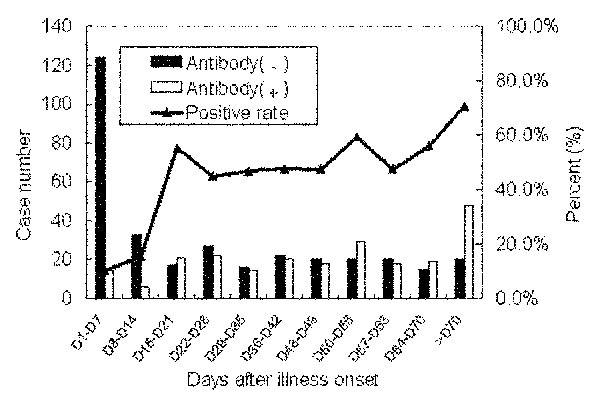Volume 10, Number 2—February 2004
THEME ISSUE
2004 SARS Edition
Laboratory Study
Serologic and Molecular Biologic Methods for SARS-associated Coronavirus Infection, Taiwan
Figure 2

Figure 2. Antibody positive rate of serum specimens collected on different days from probable SARS case-patients. If a patient had two or more specimens, the patient was only counted once.
Page created: January 26, 2011
Page updated: January 26, 2011
Page reviewed: January 26, 2011
The conclusions, findings, and opinions expressed by authors contributing to this journal do not necessarily reflect the official position of the U.S. Department of Health and Human Services, the Public Health Service, the Centers for Disease Control and Prevention, or the authors' affiliated institutions. Use of trade names is for identification only and does not imply endorsement by any of the groups named above.